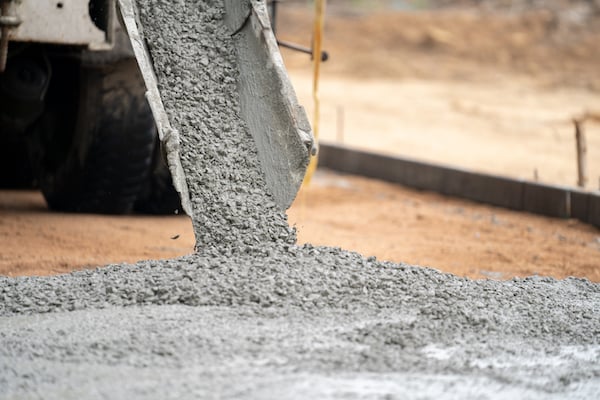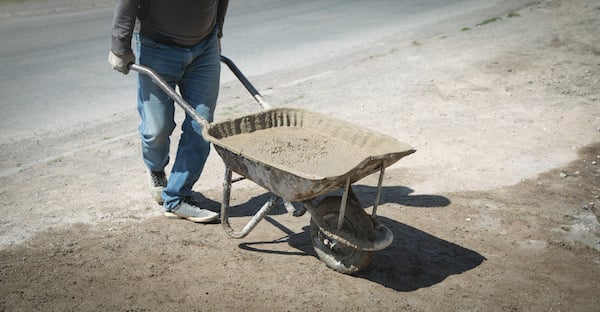Concrete resurfacing is a huge industry, and as a business owner in this field, you need the right tools to succeed; otherwise, you'll be left in the dust. Business does not wait for anyone, so in this industry, the right equipment may make all the difference between a successful pour and an avoidable catastrophe. The majority of the required tools are straightforward and easy to acquire, but there are a few essential items that you may not have considered.
Purchasing these saves money on rental fees and missed time retrieving and returning the equipment. Some specialized gear is more costly, but only if it's used on a regular basis. Otherwise, it might make more sense to rent it as needed. The following is a list of essential equipment for any concrete resurfacing business, big or small:
General Essential Tools for Concrete Contractors
1. Bull float and handle - for smoothing and leveling concrete
A bull float is a large, flat tool that's used to level and smooth freshly poured concrete. It has a long handle that allows the user to reach across wide expanses of wet concrete without having to stoop or kneel. A good quality bull float will have a rounded front edge to prevent gouging the surface of the concrete and will be made from durable materials like aluminum or magnesium.
If you're working on small projects, you can get by with a shorter handled bull float, but for anything more than that, it's worth investing in a longer one. You'll also need a separate Float Pan for holding water while you're working. This keeps the surface of the concrete wet, which helps to prevent the formation of cracks.
You can find bull floats and float pans at most hardware stores or online retailers that sell tools and construction supplies.

2. Concrete mixer - for mixing concrete
A concrete mixer is an essential piece of equipment for any business that works with concrete. It's used to mix the dry ingredients of concrete together so that they're evenly distributed before adding water. This ensures that the final product will produce a strong and consistent concrete slab.
There are two types of concrete mixers: drum and pan.
Drum Mixers
Drum mixers are the most common type, and they're what you'll find at most construction sites. They're large and can hold up to four cubic yards of concrete. Drum mixers have a rotating drum that mixes the ingredients together as they tumble inside.
Pan Mixers
Pan mixers are smaller and more compact than drum mixers. They're often used for mixing smaller batches of concrete or for projects where space is limited. Pan mixers work by tilting the entire mixer so that the concrete mixture slides down into a central pan. The sides and bottom of the pan are then rotated, mixing the ingredients together.
Portable Mixer
Portable mixers are a type of drum mixer that can be towed behind a vehicle. They're typically used for small jobs like driveways or for mixing concrete on the job site.
3. Concrete Saws - for cutting concrete
A concrete saw is a powerful tool that's used to cut through concrete, asphalt, and other hard materials. It has a diamond blade that's driven by an electric motor. Concrete saws come in a variety of sizes and styles to suit different applications.
Smaller handheld models are perfect for making cuts in tight spaces or for projects where you don't need a lot of power. These saws are lightweight and easy to maneuver, but they're not as powerful as the larger ones.
Larger walk-behind concrete saws are ideal for cutting straight lines in thick concrete slabs. They're more difficult to control, but they can make deeper cuts that are ideal for projects like roads or parking lots.

4. Wheelbarrow - for transporting concrete
A wheelbarrow is a must-have for any business that works with resurfacing concrete floors. It's used to transport wet concrete from the mixer to the job site. Wheelbarrows come in a variety of sizes. For smaller projects, you can get by with a single-wheel wheelbarrow. These are easy maneuver, but they can tip over if you're not careful. For larger jobs, it's best to use a two-wheel model. These are more stable and can carry more weight.
5. Magic Trowels - for finishing concrete
A magic trowel is a tool that's used to give a perfectly smooth finish to the surface of the concrete. It has a long handle with a flat, metal blade on the end. The blade is rotated in a circular motion to create a smooth, even surface. Magic trowels are available in different sizes to suit different applications.
A smaller hand trowel is perfect for finishing smaller projects like countertops or steps. Meanwhile, larger trowels are better suited for big jobs like sidewalks or patios.
Hand Trowels
Skim coats and overlays may be applied in the same manner as ordinary concrete. Many varieties of hand trowels are available. Some professionals like using a square-edged trowel, while others prefer a pool trowel with rounded edges.
Hand trowels come in a variety of sizes, with the most common ranging from 4 to 24 inches. They may be used to spread material across the floor from one spot to the next, with the main goal of smoothing or texturizing the topping. The angle of the shovel and how much force you apply will influence how thick and smooth the surface becomes.
6. Plate Compactor - for compacting concrete
A plate compactor is a powerful tool that's used to compact soil, gravel, and other materials. It has a large, flat plate on the bottom that's driven by an engine. The plate is vibrated back and forth, compressing the material beneath it.
Plate compactors come in both gas-powered and electric models. Gas-powered models are more powerful, but they're also louder and produce more emissions. Electric models, on the other hand, are quieter and produce no emissions. However, they're not as powerful as the gas-powered models.
7. Concrete Vibrators - for removing air bubbles
Concrete vibrators are used to remove air pockets from concrete surfaces. They work by creating vibrations in the concrete, which causes the air bubbles to rise to the surface.
Air bubbles become trapped as wet concrete is poured, forming cavities or honeycomb-like gaps. Honeycombing can reduce the cement's longevity and strength if left unchecked. Vibrators push the trapped air out of the solution, leaving a more compact and level slab as a result.
8. Vapor Retarder - for preventing moisture from entering concrete
A vapor retarder is a material that's used to prevent moisture from entering the concrete. It is placed on top of the concrete before resurfacing it. Vapor retarders come in different forms, such as sheets, liquids, or sprays.
Sheets are the most common type of vapor retarder. They're made of plastic or other water-resistant materials, and they're placed on top of the concrete surface. Liquid vapor retarders, on the other hand, are applied to the surface using a brush or hand sprayer. They form a barrier that prevents water from penetrating the concrete.
Spray-on vapor retarders are also available. These products are sprayed onto the surface, and they form a water-resistant barrier.
Vapor retarders are an important part of the resurfacing process because, without a vapor retarder, moisture can enter the concrete and cause it to expand and contract as the temperature changes. This can lead to cracking, flaking, and other damage.
9. Safety Gears
- Rubber gloves
- Hearing protection
- Eye protection
- Respirator mask
When working with concrete, it's important to wear the proper safety gear to protect you and your workers from the dangers of concrete dust and other hazards. This includes rubber gloves, hearing protection, eye protection, and a respirator mask.
Rubber gloves protect the hands from the harsh chemicals used in concrete resurfacing, such as the curing compound, concrete sealer, stripper, and other solvent-based products. It's important to choose gloves that fit snugly and are made of thick material.
Hearing protection is also a must because the noise created by the resurfacing process can be deafening. Eye protection is important because concrete dust can irritate the eyes. And finally, a respirator mask is worn to protect the lungs from the harmful fumes emitted by the concrete resurfacing process.
.jpg?width=700&height=340&name=16Pro%20prep%20(1).jpg)
10. Vacuums
Vacuums are an important part of the concrete resurfacing process. They help to remove all the dust and debris from the surface before you start resurfacing. This ensures a smooth, flawless finish. These are some of the best vacuums for concrete resurfacing:
- Dry Vacuum: A dry vacuum is great for general cleaning and removing light debris from the surface.
- Wet Vacuum: A wet vacuum is perfect for removing heavier debris, like mud and dirt. It's also good for cleaning up after a job.
Industrial Vacuum: An industrial vacuum is the best choice for concrete resurfacing businesses. It's powerful and can handle even the heaviest debris.
Conclusion
For a concrete contractor that is looking to add concrete resurfacing to their business, it's important to have the proper tools and safety gear in order to ensure a safe and successful job. In addition, wearing the proper safety gear is also essential to protect you and your workers from the dangers of concrete work.
Overall, the concrete resurfacing process is relatively simple and doesn't require a lot of specialized equipment. However, there are a few key tools that you'll need in order to get the job done right. With the proper tools and safety gear, you can add concrete resurfacing to your business with confidence.

0 comments